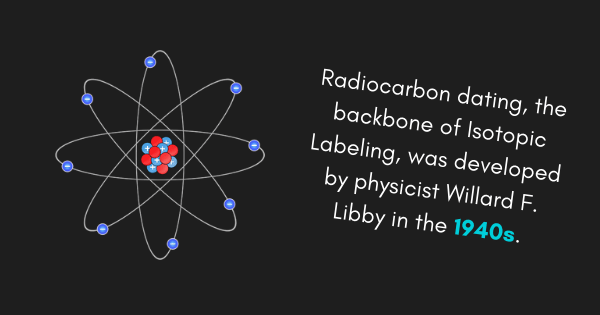Isotopic Labeling

Radiocarbon dating, the backbone of Isotopic Labeling, was developed by physicist Willard F. Libby in the 1940s. Over the last 80 years, there have been a number of advances that have increased the scope and application of Libby's method. This is mostly done with radiolabeling.
Isotopic labeling is a technique used to track the passage of an isotope through a metabolic pathway or a cell. As the isotope moves through a cell or a metabolic pathway, it is measured to determine the path or method by which it moves. Depending on the type of nuclides used, this could be considered radiolabeling. Radiolabeling occurs when radionuclides are used.
Fume Hoods in Radiolabeling
Hume hoods are a crucial element when dealing with radioactive isotopes and materials. The fume hoods are essential because when using radiolabeled products, the hood will act as an exhaust to remove fumes and other hazardous gasses away from the work area. In fact, a lab fume hood is required to have an independent certifier check to ensure it meets Cal/OSHA criteria.
Fume hoods should be present in any GMP storage or GMP synthesis conditions. The presence of a fume hood is to ensure the safety of all lab personal present.
Using a Fume Hood Properly
When using radiolabeled materials and other similar substances, it is important to ensure the fume hood is in proper working condition. Often fume hoods are used just as extra storage space (when no radioactive materials are present), which can create a dangerous situation when radiolabeled materials are in use. Be sure to always keep the fume hood area clear of storage and other materials.
Ensure that each lab technician knows how to properly use a fume hood. Having multiple techs all understand the proper way to use a fume hood creates important redundancies to ensure that the lab techs are able to double check each others work and keep each other safe.
Different Types of Fume Hoods
There are four basic types of fume hoods, all with different functions.
Acid Digestion Hoods: These fume hoods are made of material that is resistant to acid damage. Rather than metal, they are usually built with a polypropylene and polycarbonate material for added protection.
Downflow hoods: There will be many situations in which lab techs will be working with materials that are heavier than air, such as xenon or chorline gas. In these situations, a downflow hood is used to suck air through the workbench so that the heavy gasses are taken care of.
Radioisotope hoods: These are the traditional hoods for handling radioactive materials (such as materials used in radiolabeling). These hoods require lead shields to protect the bodies of lab techs in the area. These hoods are traditionally made of solid steel to bear the weight of the lead shields.
